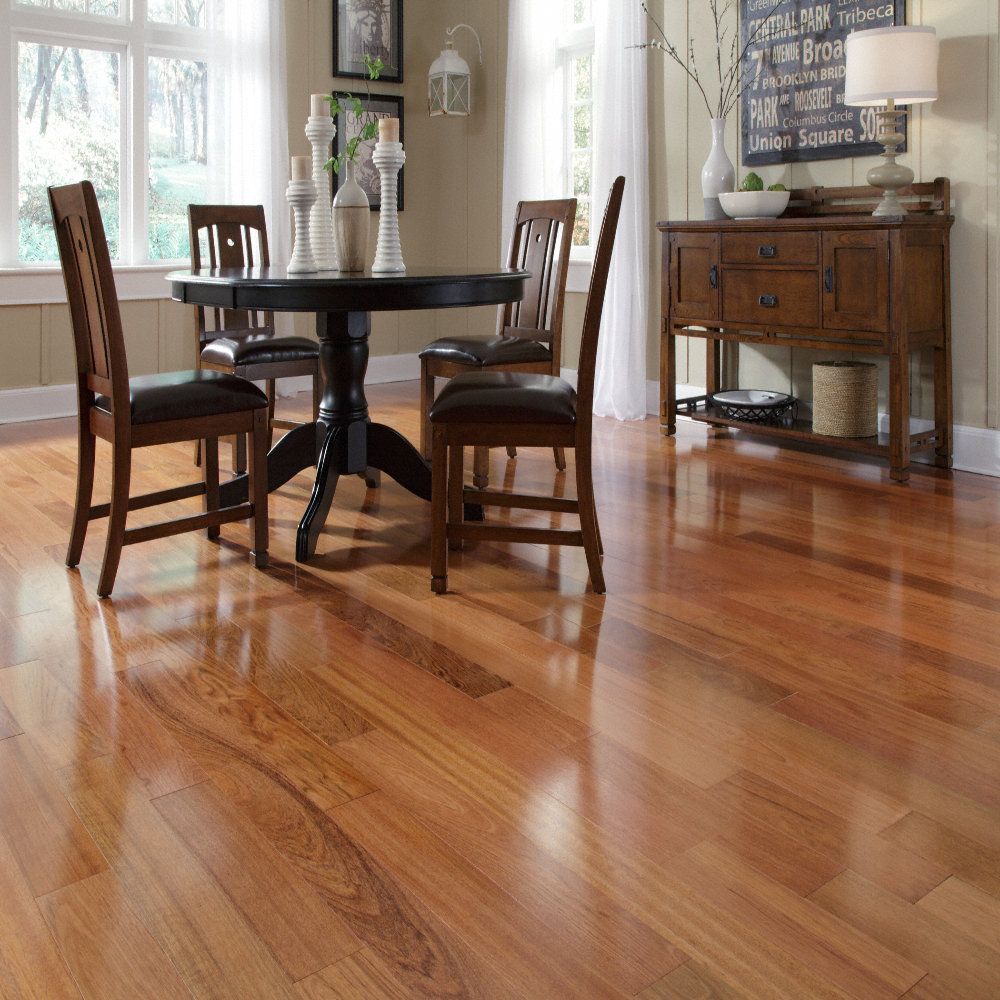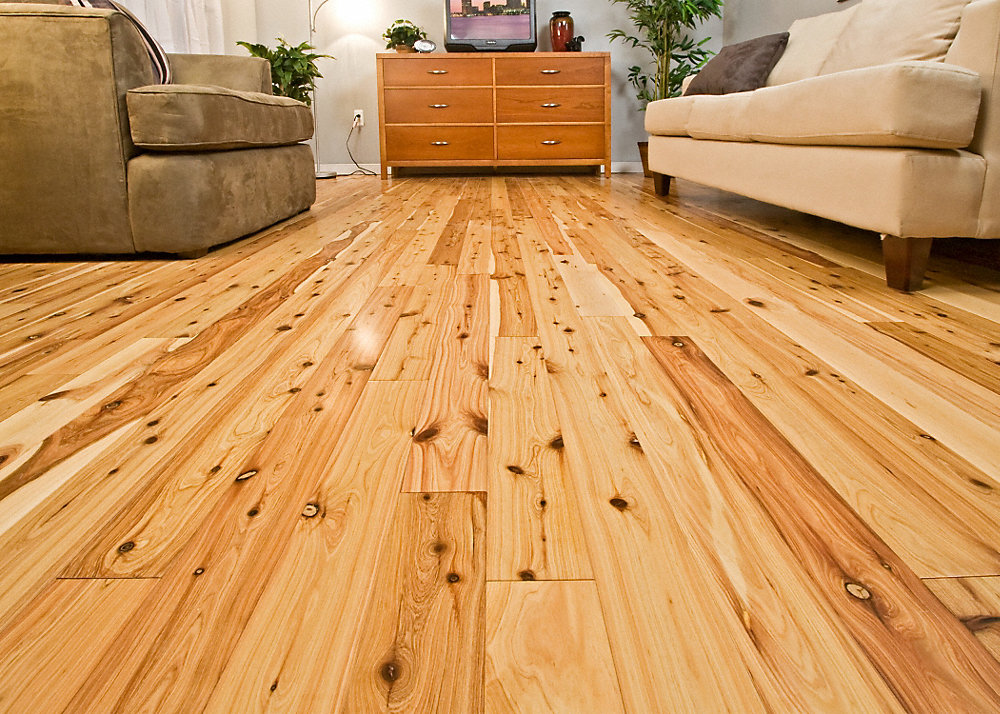Exotic hardwood flooring is made from wood sourced from regions outside the local area, such as South America, Africa, India, and Asia. These woods are known for their unique and vibrant grain patterns, rich colors, and extreme durability. The term “exotic” is used to indicate that the wood comes from outside the typical domestic sources. Exotic hardwoods offer a wide range of colors and shades not commonly found in local wood species. This makes them a sought-after flooring option because of their distinctive aesthetic qualities. Exotic hardwoods are often more durable and resistant to wear and tear than domestic hardwoods. So they are ideal for high-traffic areas. However, exotic hardwoods can be more expensive than other hardwood flooring options. Some species can be challenging to cut and install without professional-grade tools.
Exotic Hardwood from South America
Tigerwood is a highly durable hardwood that is ideal for high-traffic areas due to its hardness. It has a unique blend of dramatic grain patterns and rich reddish-orange tones, adding a touch of luxury to any space. Tigerwood is water-resistant and naturally resistant to rot and decay. This makes it perfect for outdoor use, including outdoor deck boards, shutters, deck furniture, and boats. It is also common to use for decorative items because of its beautiful grain patterns. This wood is easy to maintain, requiring only a dust mop or vacuum cleaner for regular cleaning. It also has a moderate price compared to other exotic hardwoods.
Brazilian cherry hardwood is a versatile option that can be used in a variety of decorating styles, from traditional to contemporary. It comes in different shades, allowing homeowners to pair it with various wood furnishings and create a warm environment. The wood’s rich, warm color and distinctive grain pattern make it a popular choice for its aesthetic beauty. It naturally varies in color from burgundy to red, orange, and even some pink tones, and it darkens over time. Those tones of color add character and depth as it ages.

Acacia wood is one of the most durable hardwoods. It is ideal for furniture and flooring that will be used frequently. It is also resistant to scratches, dents, and other damage, and it has a natural shine that lasts for years. This wood has a beautiful natural grain and color, ranging from light amber to dark mahogany. Of course, this will add an elegant and rustic touch to any room or outdoor space. Acacia trees grow fast and can be harvested sustainably, so it’s an environmentally friendly choice compared to slower-growing hardwoods.
Exotic Hardwood from Central America
Santos mahogany is a very durable hardwood species commonly found in Central America and southern Mexico. This wood features a range of colors, from a lighter golden brown to a darker purplish red or burgundy, with a distinctive interlocking grain and a medium-to-fine texture. It has a high natural gloss, and quarter-sawn sections may display a striped or ribbon pattern, adding to its aesthetic appeal. Santos mahogany is also easy to work with and has good finishes, making it a popular choice for flooring, furniture, and interior trim.
Exotic Hardwood from Oceania
Australian Cypress is a highly durable and versatile softwood. It is extremely durable, with a Janka hardness rating of 1,360 lbs, making it suitable for high-traffic areas and resistant to decay, rot, and insect attacks. It has a varied color range, from light tan to darker brown, with a straight grain and a medium uniform texture. The wood has a moderate natural luster, adding to its aesthetic appeal. It is naturally resistant to moisture, decay, and insect attacks, making it a long-lasting and low-maintenance option. Australian Cypress is an environmentally friendly choice.

Resume
Domestic hardwood and exotic hardwood represent two distinct categories of hardwood flooring. Domestic hardwood derives from trees native to the United States, such as oak, maple, ash, cherry, birch, walnut, or hickory. On the other hand, exotic hardwood originates from various regions worldwide, particularly tropical areas. The most common are Brazilian walnut, Brazilian cherry, Australian cypress, and purple Heart.
Domestic hardwoods are generally more affordable and readily available than exotic hardwoods. They offer a traditional, warm appearance and are suitable for a wide range of designs. In contrast, exotic hardwoods tend to be denser, harder, and more expensive due to their striking visual impact and the costs associated with importing them. The choice between these two types of flooring depends on factors such as availability, personal preference, and budget. Important aspects to consider when comparing domestic and exotic hardwoods include color, availability, and hardness. Domestic hardwoods typically undergo gradual color changes, are more widely available, and may be less dense, while exotic hardwoods often exhibit more rapid color changes, are less readily available, and tend to be denser and harder. The decision ultimately hinges on individual needs and priorities.

